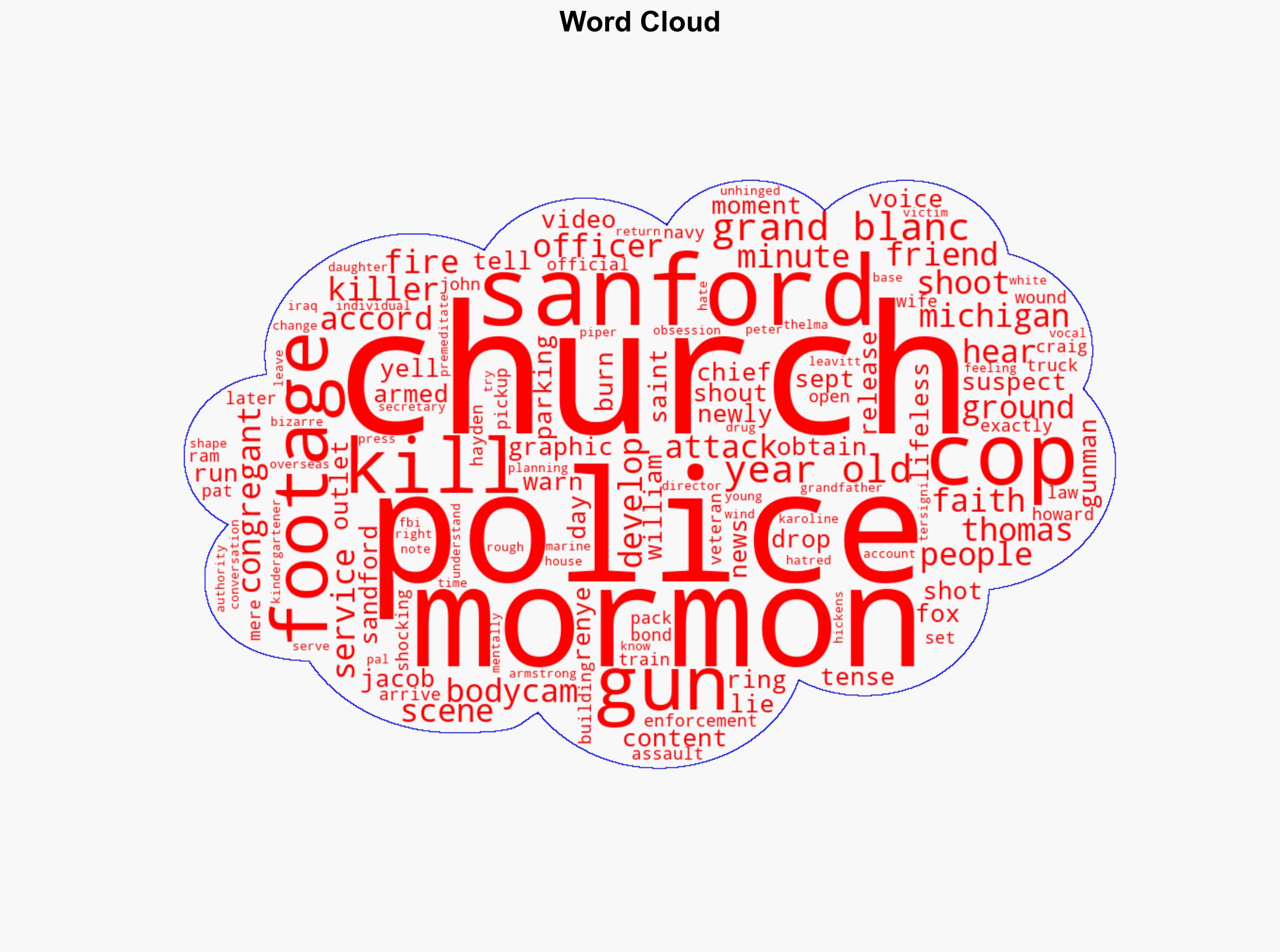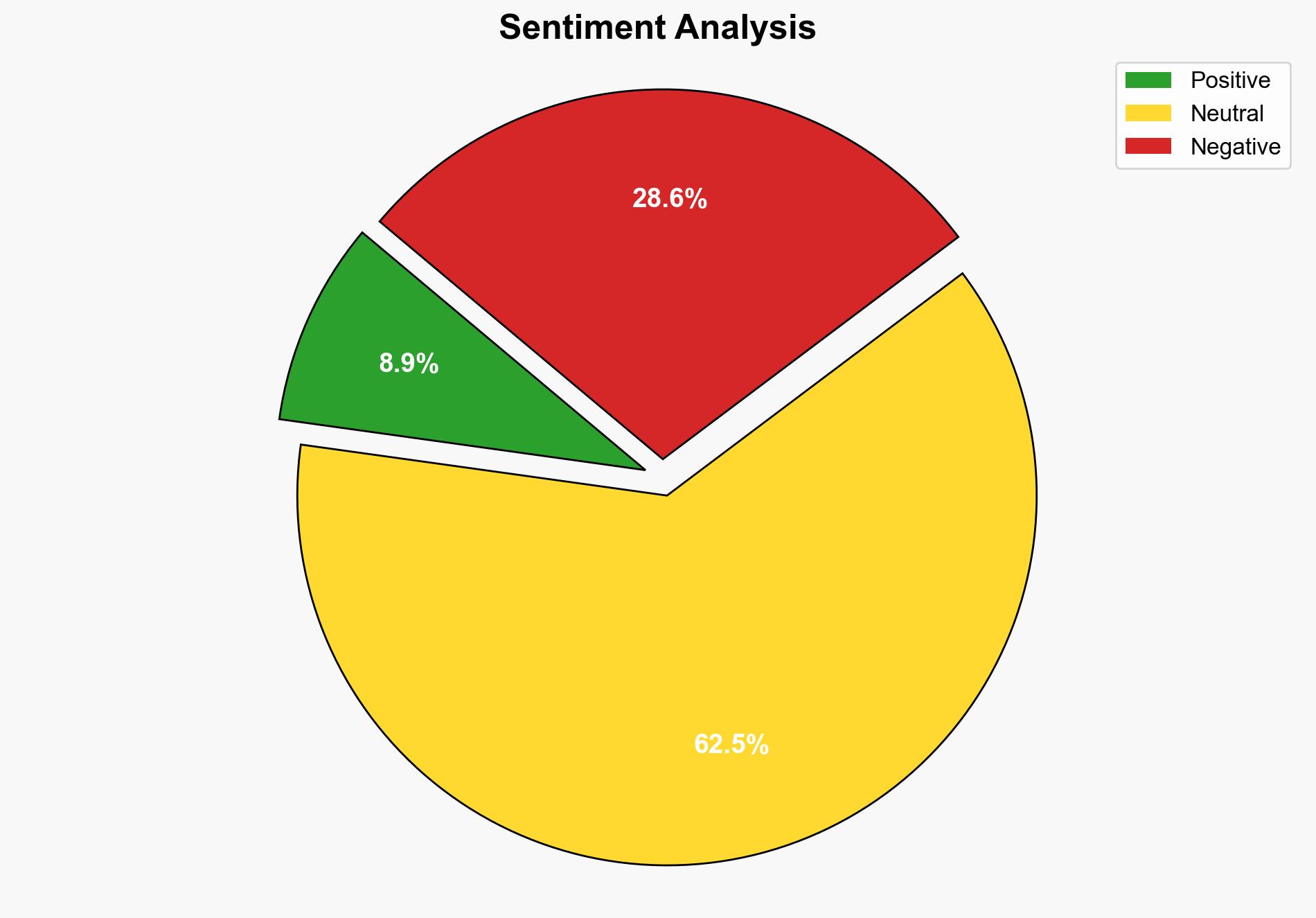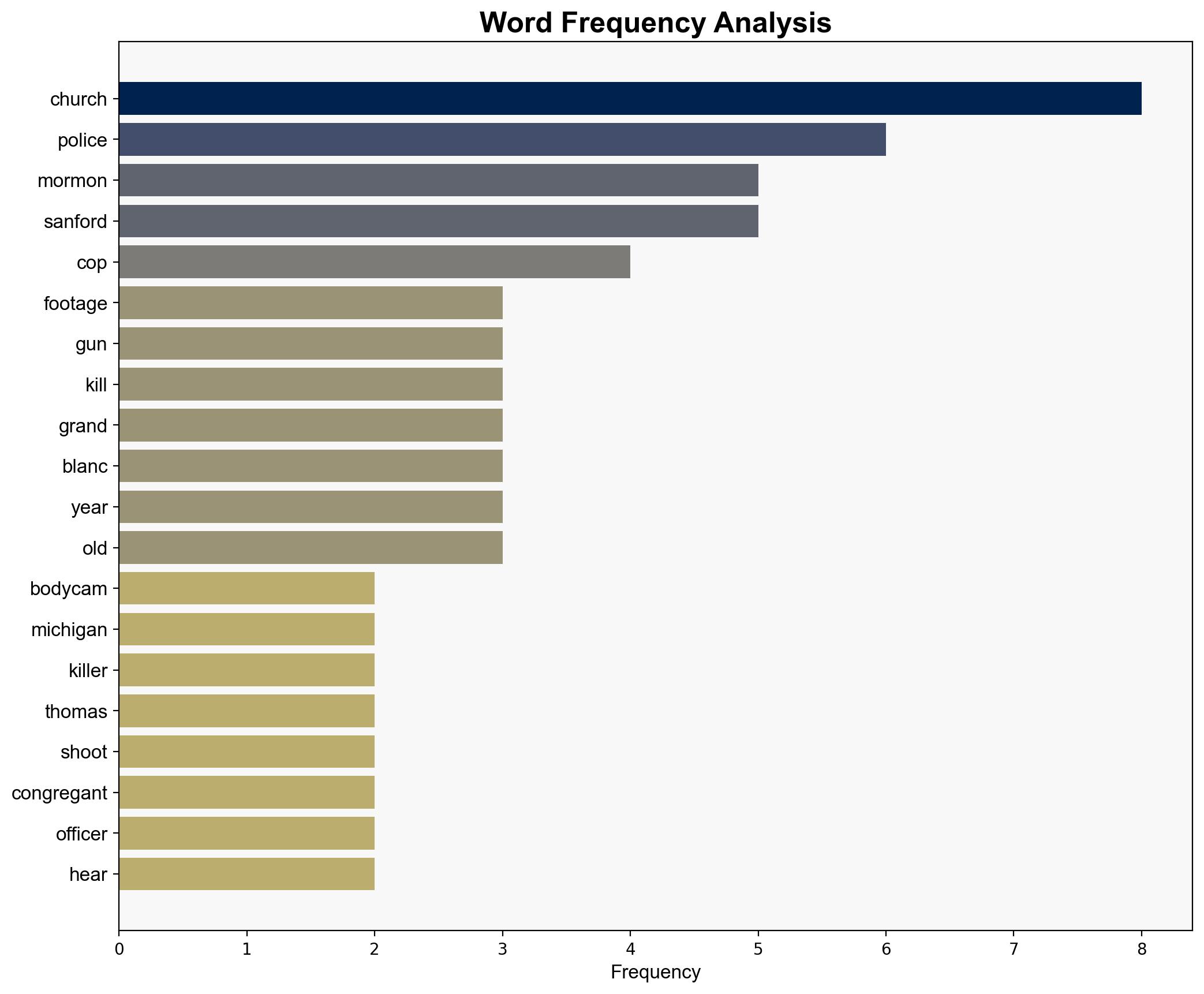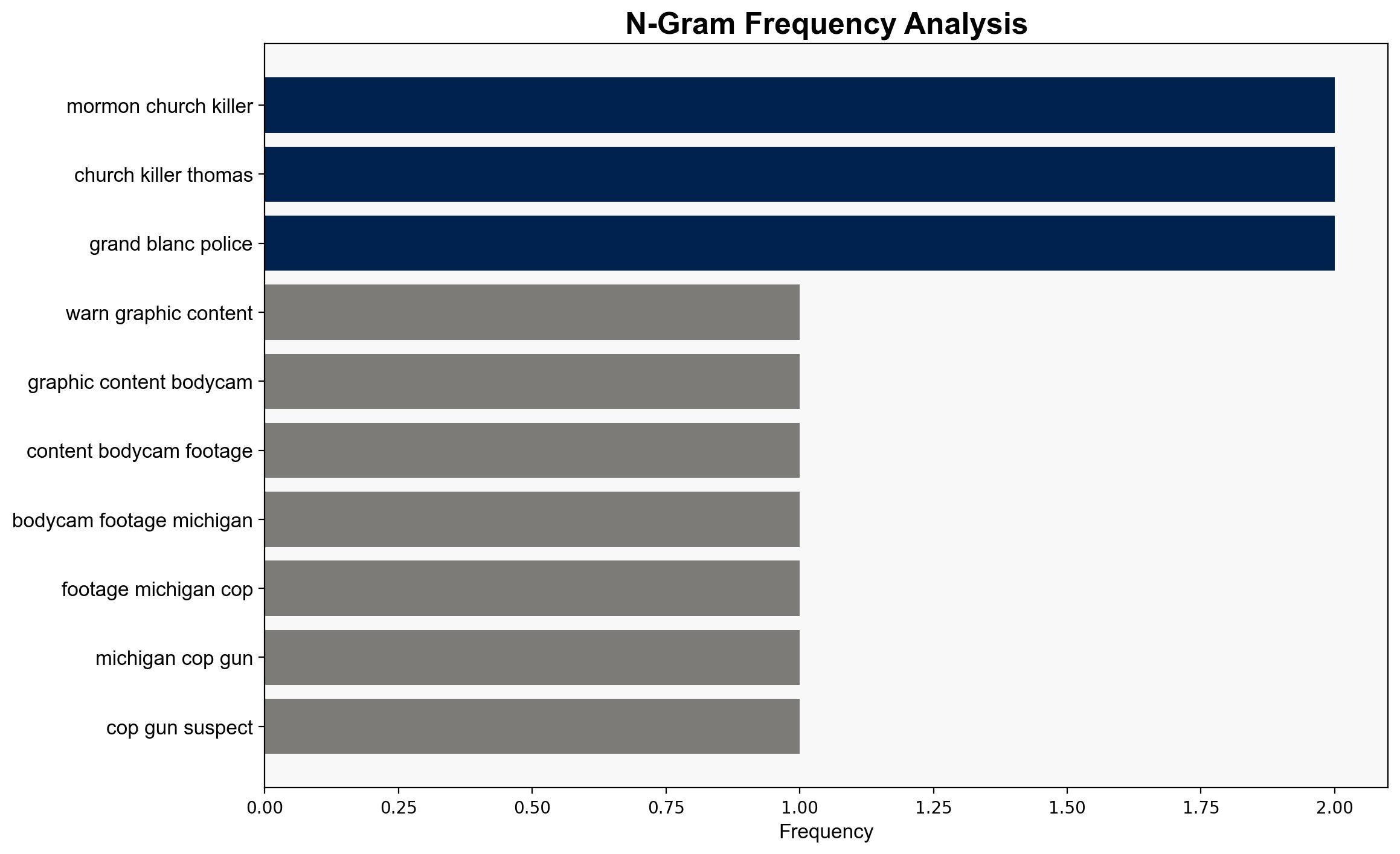Bodycam footage shows Michigan cops gun down suspected Mormon church killer Thomas Sanford – New York Post
Published on: 2025-10-05
Intelligence Report: Bodycam footage shows Michigan cops gun down suspected Mormon church killer Thomas Sanford – New York Post
1. BLUF (Bottom Line Up Front)
The most supported hypothesis is that Thomas Sanford’s attack was driven by a personal vendetta against the Mormon Church, exacerbated by psychological instability. Confidence in this hypothesis is moderate due to limited direct evidence of premeditation and mental health records. Recommended action includes enhancing community outreach and mental health support to mitigate similar threats.
2. Competing Hypotheses
1. **Hypothesis A**: Thomas Sanford’s attack was a targeted act of violence driven by a personal vendetta against the Mormon Church, influenced by his psychological instability and past military experiences.
2. **Hypothesis B**: The attack was a spontaneous act of violence with no specific religious or ideological motivation, but rather a result of a mental health crisis exacerbated by substance abuse.
Using the Analysis of Competing Hypotheses (ACH) 2.0, Hypothesis A is better supported due to Sanford’s known obsession with the Mormon faith and vocal expressions of hatred, as reported by friends. Hypothesis B lacks supporting evidence of substance abuse or a clear mental health crisis at the time of the attack.
3. Key Assumptions and Red Flags
– **Assumptions**: Hypothesis A assumes Sanford’s military background and mental health issues directly influenced his actions. Hypothesis B assumes a lack of premeditation.
– **Red Flags**: The absence of detailed mental health records and potential biases in witness accounts could skew interpretations. The lack of a clear motive or manifesto raises questions about the depth of Sanford’s planning.
4. Implications and Strategic Risks
The incident highlights the risk of targeted violence against religious institutions, potentially inspiring copycat attacks. It underscores the need for enhanced security protocols at places of worship. The psychological dimension suggests a need for improved mental health interventions for veterans and individuals with known obsessions or vendettas.
5. Recommendations and Outlook
- Enhance community outreach programs focused on mental health support, particularly for veterans.
- Increase security measures at religious institutions, including training for staff on identifying and responding to potential threats.
- Scenario-based projections:
- Best Case: Improved mental health support reduces similar incidents.
- Worst Case: Lack of intervention leads to increased targeted attacks on religious institutions.
- Most Likely: Continued sporadic incidents with heightened security responses.
6. Key Individuals and Entities
– Thomas Sanford
– William Renye
– Peter Tersigni
– Karoline Leavitt
7. Thematic Tags
national security threats, counter-terrorism, mental health, religious violence





